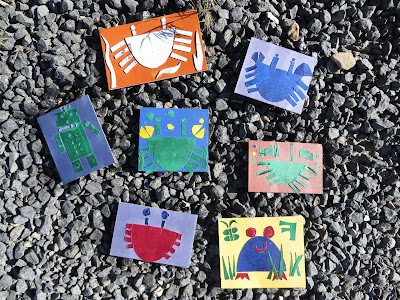 |
| Ojo de Dios in its beginning stage. |
This is a great project for many ages and calls for just yarn, sticks, and glue or wire. Popsicle sticks work well, although the images posted here were made with wooden dowels.
Begin by fastening two sticks perpendicular to each other using glue, thread, or fine wire. Take a generous strand of yarn, tie it to the center of the crossed structure and begin weaving by going around the sticks clockwise or counter clockwise.
Experiment with different weaves by going over-around, under-around, or over-around, over-around. This probably won't make sense until you try it, but once you do, you'll see how easy it is.
 |
| Ojo de dios showing two different weaving patterns. |
In this photo you can see two different patterns. One pattern is a repetition of over-around, and the other is a repetition of under-around.
 |
| Beautiful Ojo de Dios using only one color. |
We have used multiple colors in some Ojos, but you can see that if the pattern is varied then only one color can also be effective.
 |
| Ojo de Dios with smaller ones on the tips. |
Here is an Ojo de Dios that has smaller ones attached to the tips of the center Ojo. The Huichol tribe in Mexico is known for their beautiful Ojos, although it is called something else.















